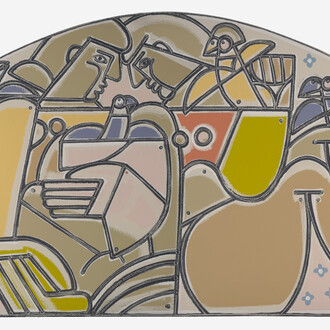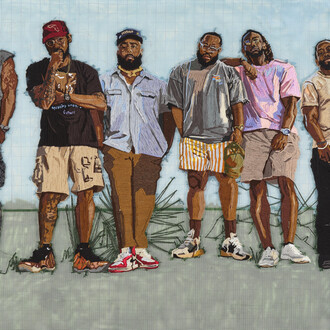Opening January 17 at the Institute of Contemporary Art at the University of Pennsylvania (ICA), Carl Cheng: Nature Never Loses marks the first in-depth museum survey of multidisciplinary artist Carl Cheng. Encompassing more than 60 works as well as archival materials on view throughout both floors of the ICA, the exhibition brings together six decades of Cheng’s prescient, genre-defying work that operates at the intersection of identity, technology, and ecology. Nature Never Loses highlights the innovative and interdisciplinary nature of Cheng’s practice, one which has been largely excluded from art historical narratives to date, and animates the arc of the artist’s career through a presentation that is multidisciplinary, ephemeral, process-based, and interactive.
On view at ICA through April 6, 2025, Carl Cheng: Nature never loses is curated by Alex Klein, Head Curator and Director of Curatorial Affairs at The Contemporary Austin, with Denise Ryner, Andrea B. Laporte Curator, as ICA’s receiving curator. Klein previously served as Senior Curator at ICA and has worked closely with Cheng over the last four years, meticulously distilling the artist’s vast oeuvre and archival material into a survey that includes documentation of rarely seen past installations and public artworks. The exhibition premiered at The Contemporary Austin on September 6, and will be presented throughout North America and Europe following its presentation at ICA.
“Nature never loses reflects ICA’s dedication to supporting research that brings to light the work of under recognized artists across generations”, remarks Zoë Ryan, ICA’s Daniel W. Dietrich, II Director. “Alex Klein initiated this project during her tenure as ICA’s senior curator and we are thrilled to now partner with The Contemporary Austin on presenting the brilliant and vital work of Carl Cheng, whose practice explores some of the most pressing issues we face today, to audiences across the country”.
Cheng first developed his practice in Southern California in the 1960s amid political unrest, an interdisciplinary art scene, a booming post-war aerospace industry, and rapid development of the region’s landscape. Over the last sixty years, he created an ever-evolving body of work, incorporating a variety of materials and media and engaging with environmental change, the relevance of art institutions to their publics, and the role of technology in society—topics that are increasingly urgent in our contemporary moment. Although Cheng originally gained recognition for his photographic sculptures, his inventive lexicon includes the creation of “art tools” employed in the production of artworks, “nature machines” that anticipate an artificial world shaped by humans, and site-specific interventions aimed at engaging broad audiences.
Cheng’s vision is marked by an unparalleled understanding of art and its correlation with his own identity, and the natural and human-made worlds around him. Since 1966, Cheng has also operated under the moniker John Doe Co., a simultaneous critique of corporate culture and the Vietnam War-era discrimination he faced as an Asian American. His work has consistently probed questions of natural agency and the extractive impact of humans on the environment. These investigations are tied to his unique approach to technology as an artistic tool and his critique of neoliberal notions of progress that undergird both the art market and the tech industry.
“I am continuously inspired by Carl’s ethos and outlook”, says Klein. “Informed by his own unique methodology and lexicon, his work consistently challenges disciplinary boundaries and is imbued with a genuine desire to engage broad publics. In our current moment of ecological calamity and rapid technological change, his prescient practice offers an alternative vision of humans’ relationship to nature, our ability to innovate and adapt, and the possibilities of art”.
Denise Ryner, ICA’s Andrea B. Laporte Curator adds, “Cheng’s work emerged in a moment when artists were playing with the idea of consumer culture, technology, and mass production while earnestly addressing the environmental impacts of such activities. His emphasis on participatory and public work to communicate these concerns from the 1960s on stands out as prescient, making the current focus on his practice relevant to ICA audiences”.
















